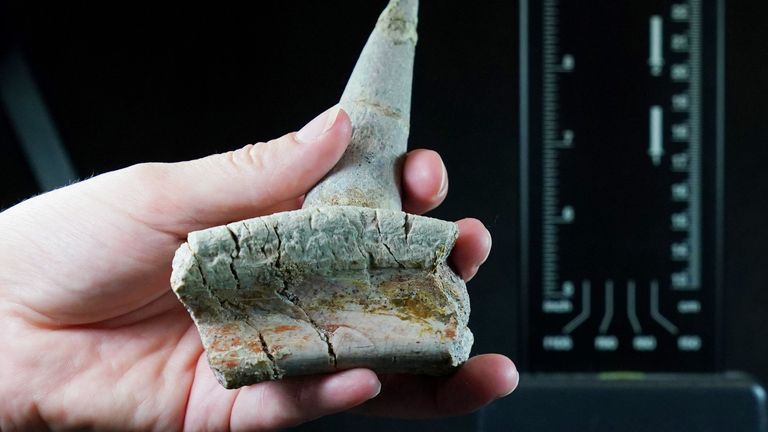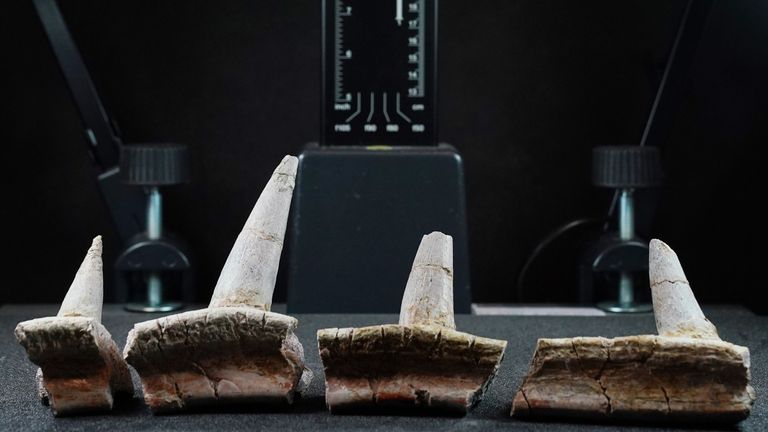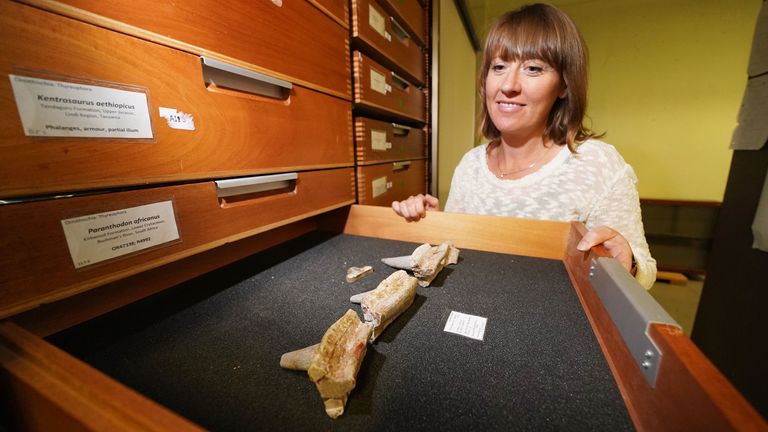Experts initially believed the new fossil was a stegasaurian dinosaur, as stegosaurs have been found at the site before, but further examination showed it was actually an ankylosaur.

A new species of dinosaur has been discovered in Morocco, after scientists found an “unusual” fossil was believed to be at least 20 million years older than similar types previously uncovered.
The fossil of an ankylosaur rib has a series of spikes on it and was found at the Boulahfa site in the Middle Atlas mountains.
Ankylosaurs were a herbivorous group of dinosaurs, known for armoured tank-like bodies and a club-shaped tail top.

Dr Susannah Maidment, a palaeontologist at the Natural History Museum, said existing ankylosaurs fossils have been dated back to the Cretaceous period – roughly between 145.5 and 65.5 million years ago.
But this discovery is around 165 million years old, dating back to the Jurassic era.
“This is a new species of ankylosaur, it’s much older than any other ankylosaur that we’ve found, but also it has this really, really strange morphology,” Dr Maidment said.
“This fossil is about 165 million years old. It’s from the Middle Jurassic, a time period where we have really hardly any evidence of ankylosaurs at all.”
The Ankylosaurs species has been characterised by a series of bony plates and spikes embedded in its skin.
The new fossil – detailed in the journal Nature Ecology and Evolution – is the first found in Africa and shows long spikes attached to the bone, which Dr Maidment said is “unusual”.

“This specimen actually has spikes and an osteodermal plate fused to a rib – so it’s attached firmly to the rib and couldn’t have come apart,” she said.
“That is really weird. We don’t see that in any other ankylosaur, and in fact we don’t see that in any other vertebra that we know of, living or dead.”


Dr Maidmont acquired the rib from a fossil dealer in Cambridge in 2019.
The new species has been named Spicomellus afer – Spicomellus means collar of spikes, and afer means “of Africa”.
Experts initially believed the new fossil was a stegasaurian dinosaur, as stegosaurs have been found at the site before, but further examination showed it was actually an ankylosaur.